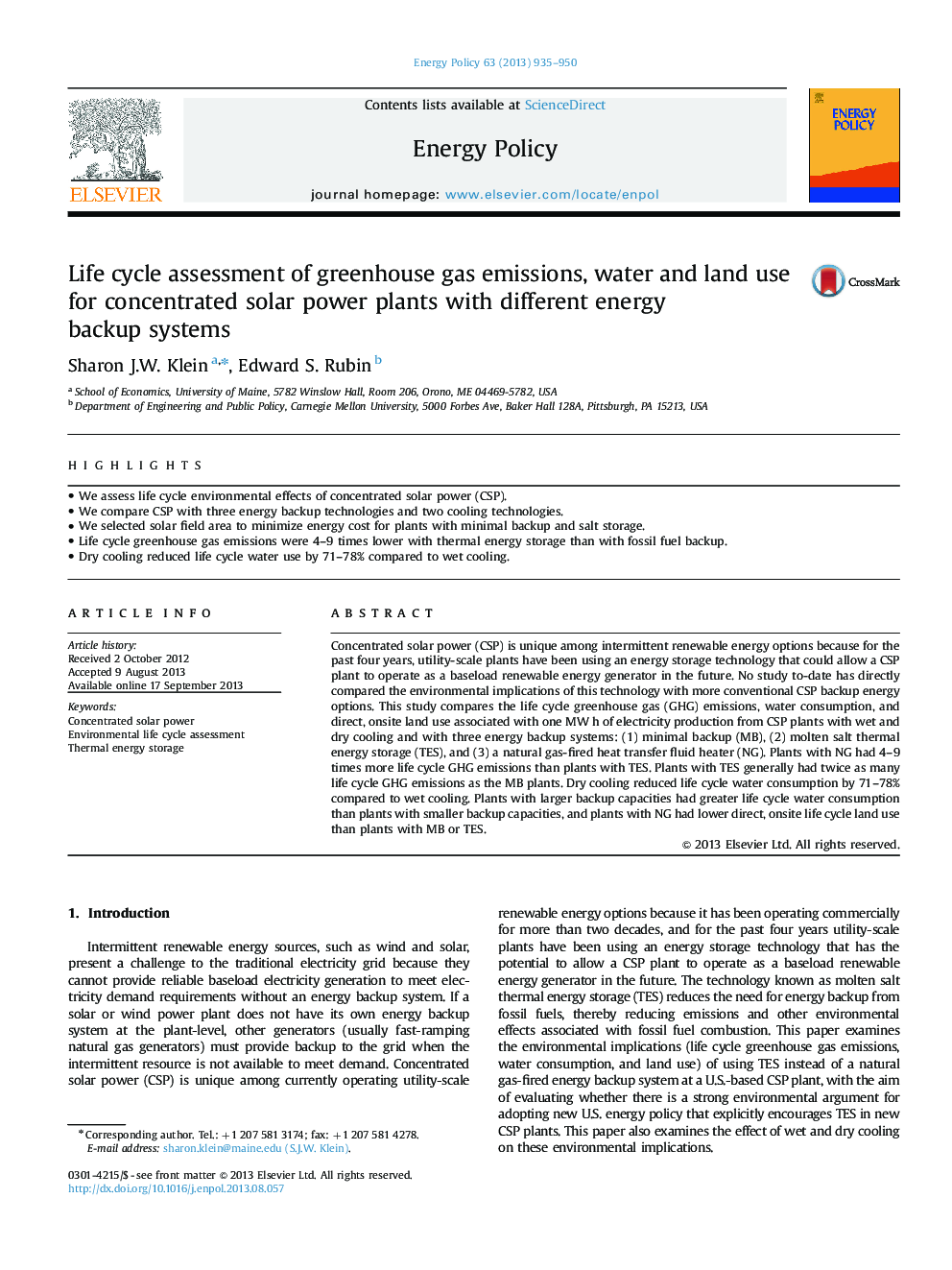| Article ID | Journal | Published Year | Pages | File Type |
|---|---|---|---|---|
| 7404033 | Energy Policy | 2013 | 16 Pages |
Abstract
Concentrated solar power (CSP) is unique among intermittent renewable energy options because for the past four years, utility-scale plants have been using an energy storage technology that could allow a CSP plant to operate as a baseload renewable energy generator in the future. No study to-date has directly compared the environmental implications of this technology with more conventional CSP backup energy options. This study compares the life cycle greenhouse gas (GHG) emissions, water consumption, and direct, onsite land use associated with one MWÂ h of electricity production from CSP plants with wet and dry cooling and with three energy backup systems: (1) minimal backup (MB), (2) molten salt thermal energy storage (TES), and (3) a natural gas-fired heat transfer fluid heater (NG). Plants with NG had 4-9 times more life cycle GHG emissions than plants with TES. Plants with TES generally had twice as many life cycle GHG emissions as the MB plants. Dry cooling reduced life cycle water consumption by 71-78% compared to wet cooling. Plants with larger backup capacities had greater life cycle water consumption than plants with smaller backup capacities, and plants with NG had lower direct, onsite life cycle land use than plants with MB or TES.
Related Topics
Physical Sciences and Engineering
Energy
Energy Engineering and Power Technology
Authors
Sharon J.W. Klein, Edward S. Rubin,
